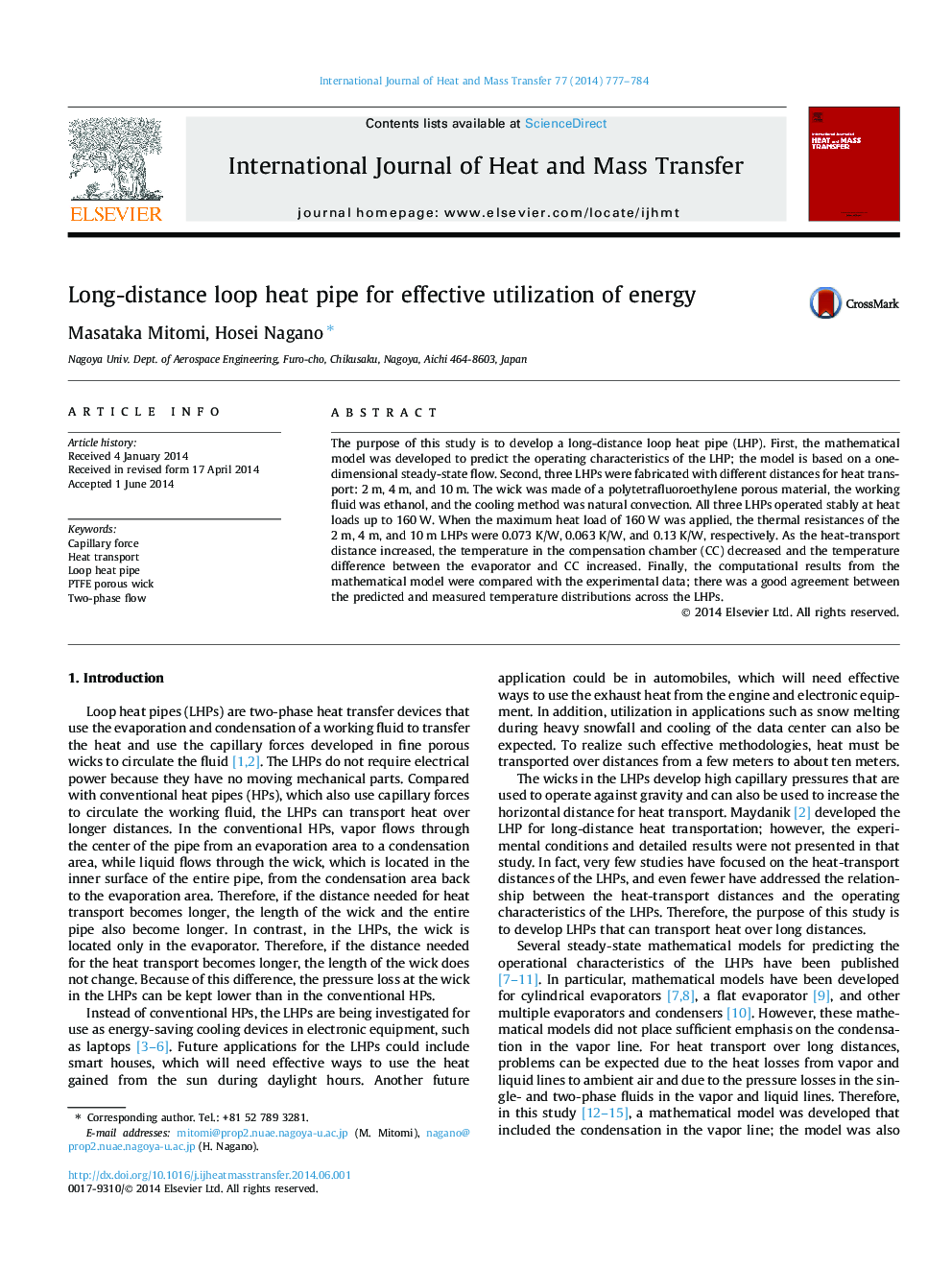| Article ID | Journal | Published Year | Pages | File Type |
|---|---|---|---|---|
| 657829 | International Journal of Heat and Mass Transfer | 2014 | 8 Pages |
Abstract
The purpose of this study is to develop a long-distance loop heat pipe (LHP). First, the mathematical model was developed to predict the operating characteristics of the LHP; the model is based on a one-dimensional steady-state flow. Second, three LHPs were fabricated with different distances for heat transport: 2Â m, 4Â m, and 10Â m. The wick was made of a polytetrafluoroethylene porous material, the working fluid was ethanol, and the cooling method was natural convection. All three LHPs operated stably at heat loads up to 160Â W. When the maximum heat load of 160Â W was applied, the thermal resistances of the 2Â m, 4Â m, and 10Â m LHPs were 0.073Â K/W, 0.063Â K/W, and 0.13Â K/W, respectively. As the heat-transport distance increased, the temperature in the compensation chamber (CC) decreased and the temperature difference between the evaporator and CC increased. Finally, the computational results from the mathematical model were compared with the experimental data; there was a good agreement between the predicted and measured temperature distributions across the LHPs.
Related Topics
Physical Sciences and Engineering
Chemical Engineering
Fluid Flow and Transfer Processes
Authors
Masataka Mitomi, Hosei Nagano,
